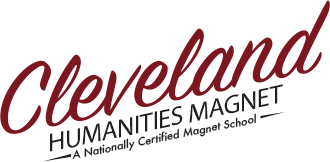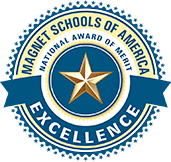Conference Hours:
Before or after class–prearranged
This year we will study the history of the United States. It is a powerful and fascinating story extending back centuries even before the rediscovery in 1492. It is a colorful narrative whose main characters include both men and women from every ethnic and cultural background imaginable, as well as the substantial role of geography and the natural environment.
To cover every fact and event is an impossibility within the scope of this class, therefore, we will examine only certain significant topics and/or individuals that have greatly influenced this nation. By doing so a better comprehension of America’s past, present, and future shall be forthcoming.
REQUIRED TEXTBOOK
The American Pageant
AP EXAM
- Friday May 10, 2013 (morning/4 hrs.)
- Fee – $87 per student per test
EXAM STRUCTURE
- 80 Multiple Choice Questions
- 2 Free Response Essay Questions (4 paragraphs each)
- 1 DBQ (Document Based Question) (5 paragraphs)
COURSE OF STUDY
| FALL SEMESTER | TEXT READINGS (Chapters) | |
| UNIT I | Foundation: Native American History, European Imperialism, English Colonial History, and the Anglo-French Rivalry | 1-6 |
| UNIT II | The Revolutionary Era and Early Nationhood | 7-10 |
| UNIT III | The Jeffersonian Revolution, the War of 1812, the rise of Nationalism and Jacksonian Democracy | 11-15 |
| UNIT IV | Antebellum Society: North and South, Manifest Destiny and Causes of the Civil War | 16-19 |
| UNIT V | The Civil War Era, Reconstruction, Age of Industry, Immigration, Urbanization and the Wild West | 20-26 |
| SPRING SEMESTER | ||
| UNIT VI | Imperialism, Progressivism, Wilson and WWI | 27-30 |
| UNIT VII | The Roaring 20s, Great Depression, FDR and the causes and the Outbreak of WWII | 31-34 |
| UNIT VIII | America in WWII, The Early Cold War, Ike and 1950s, the Turbulant 1960s: JFK, LBJ, the Great Society and the Vietnam War | 35-38 |
| UNIT IX | Nixon, the Stalemated 1970s, Rise of Conservativism, Reagan Revolution, Post-Cold War Era, Clinton, Election of 2000, G. W. Bush, 9/11, the War on Terror, the Election of Obama, and the New Century | 39-41 |
Recommended Websites:
GRADE SCALE (ENGRADE)
Each assignment, quiz, test, exam, essay, and special project(s) will be graded by using the GPA scale. The scale is as follows:
4 = A
3 = B
2 = C
1 = D
0 = F
I will add up your total for the 5, 10, 15 & 20 week report cards and divide by the number of grades (assignments and tests). This will allow me to calculate your own personal GPA by using the following scale:
| Grading GPA | Engrade Grade Percentages | |||
| 3.45 – 4.00 | = | A | = | 86.19% – 100% |
| 2.6 – 3.44 | = | B | = | 65% – 86.09% |
| 1.6 – 2.59 | = | C | = | 40% – 64.9% |
| 1.00 – 1.59 | = | D | = | 25% – 39.9% |
| 0 – .99 | = | F | = | 0% – 24.9% |
Tardies & Truants – 0/1 = E, 2 = S, 3 or more = U
* Special Tardy note: 10 Tardies or more for semester will drop you by one letter grade, 20 Tardies or more = two letter grade drop, etc.
Missing Assignments – 0/1 = E, 2/3 = S, 4 or more = U
*This includes missing quizzes, tests, and essays
Absences – missing twenty or more days = automatic FAIL
NO: Food, sugar drinks, gum, cellphones, pagers, CD/MP3/DVD players, or any other non-classroom item out and being used during classtime (EVER!) Or it will become mine for the semester!!!
GENERAL INFO ABOUT COURSE
This is a two semester course that is designed to prepare High School students for the college level Advanced Placement Exam given in May each year.
The nature of this course is an extensive and unyielding study of United States History as taught at the university level. The pay-off is that if a student passes the national College Board Exam they will earn college credit. In addition to this, by simply taking this course every student receives more credit in their high school record than if they had taken a regular U.S. History class.
All students must take this course seriously and never get behind for, just like in college, you will find it very difficult to catch up and pull a descent grade. If you can keep up with the written work, readings, and seldom miss class then passing with a good grade is realistically obtainable.
THE MEANING OF THE AP EXAM SCORES
If your score on the national College Board Exam is the following:
5 You will receive automatic history college credit at most universities and colleges. (as well as a FREE LUNCH from me!!)
4 You will automatically receive college credit at most universities and colleges.
3 You will automatically receive college credit at most universities and colleges.
2 Is not a pass on the AP exam but earning a 2 is not a failure. You were probably close to a 3 but just didn’t quite get it. I can accept this score.
1 This is TOTALLY UNACCEPTABLE!!! Spending nearly 8 1/2 months in this class means that achieving a 1 is nearly impossible for a student who minimally applies themselves. If you only earn a 1 on the national exam then your time in my class was a complete waste of your and my time! Don’t take the exam unless you are totally committed!!!!
*So be very serious about choosing to take the national College Board Exam! It should be a total commitment on your part to prepare for the exam!
AP Test Score Grade Impact
The following applies to only those that take the National College Board Advanced Placement Exam in May:
| Test Scores | Grade Impact |
| 5 | Both semester grades raised to “A” |
| 4 | Both semester grades raised one letter grade |
| 3 | No change |
| 2 | No change |
| 1 | Both semester grades lowered one letter grade |
EXTRA-CREDIT
Value: For every 50 points of extra-credit a student earns, a “4” (“A”grade) is added into that student’s general grade.
There are several ways to earn extra-credit. This includes (NOTE: CD is accepted for all reports):
- Two book reports (100 pts. each/200 pts. max.)
- Two museum reports (50 pts. max./100 pts. max.)
Focus of Reports: Fall – Colonial to 1900, Spring – 1900 to present
Deadline Dates
Fall semester – December 7, (Friday) 2012
Spring semester – May 17, (Friday) 2013
Conversion Table – Points earned / Grade(s) value (500 pts. Max.)
50 = 4
100 = 8
150 = 12
200 = 16
250 = 20
300 = 24
350 = 28
400 = 32
450 = 36
500 = 40
Book Report – Fall – Colonial to 1900, Spring – 1900 to present
After selecting a title, make sure you have discussed your choice with the instructor before beginning to read. Then follow these guidelines in preparing your report.
Overall length: 8 to 12 pages (double spaced/14 font size)
- Analysis: 5 to 6 pages
- Examine main points and emphasis of book
- Critical evaluation: 3 to 4 pages (answer the following questions)
- How does the book historically match-up to your previous knowledge on the subject and current class material covered in lecture and/or your text?
- Does the author(s) deal fairly with the topic(s) discussed? (As far as you know.)
- Do you agree or disagree with the author’s point of view? (Explain why or why not and be specific.)
- Include a full bibliography at end of paper. (author, title, publisher, city published in & date published)
- Semester topics: Fall – 1200 to 1815 & Spring -1815 to present
- DUE DATES: (Fall) December 7, 2012 / (Spring) May 17, 2013 – *early ones happily accepted!
Museum Reports (Fall – Colonial to 1900, Spring – 1900 to present)
Overall length: 4 to 5 pages (double spaced/14 font size)
- Your personal observations of the facility (1/2 page or more)
- Description (ID’s) of 25 or more exhibits – *list them in numerical order
- Photo of yourself at the museum (INSIDE)
- DUE DATES: (Fall) December 7, 2012 / (Spring) May 17, 2013 – *early ones happily accepted!
Pertinent Museum Info:
You can do a maximum of two museum reports (per semester).
(All of the following museums have student discounts. Call in advance for times and directions.)
- Museum of Latin American Art – 628 Alamitos Ave., Long Beach (562/437-1689)
- Pacific Asia Museum – 46 N. LosRobles Ave.,Pasadena (626/449-2742)
- Southwest Museum – 234 Museum Dr., L.A. (323/221-2164)
- Japanese American National Museum – 369 E. 1st St., Little Tokyo (213/625-0414)
- California African American Museum – 600 State Drive, Exposition Park (213/744-7432)
- Autry Museum of Western Heritage – 4700 Western Heritage Way, L.A. (323/667-2000)
- Museum of Tolerance – 9786 West Pico Blvd., West L.A. (310/553-8403 / info. #2)
- Skirball Cultural Center – 2701 North Sepulveda Boulevard, L.A. (310/440-4500)
- Ronald Reagan Presidential Library – 40 Presidential Drive, Simi Valley (800/410-8354)
- Richard Nixon Presidential Library – 18001 Yorba Linda Blvd., Yorba Linda (714/993-3393)


